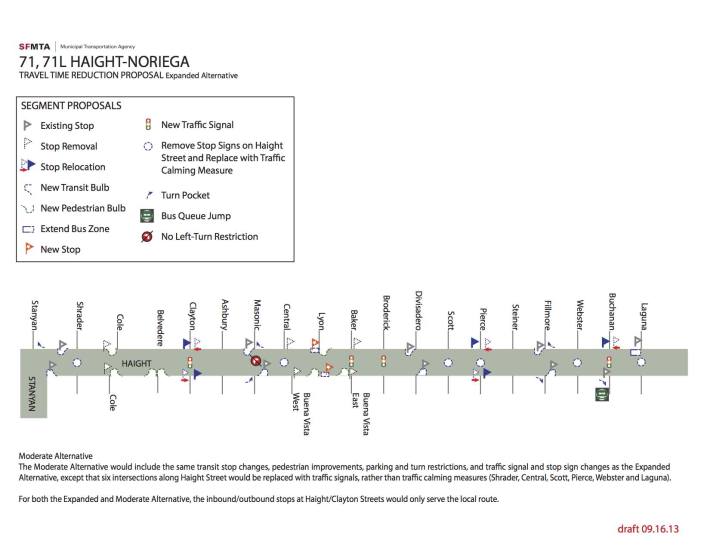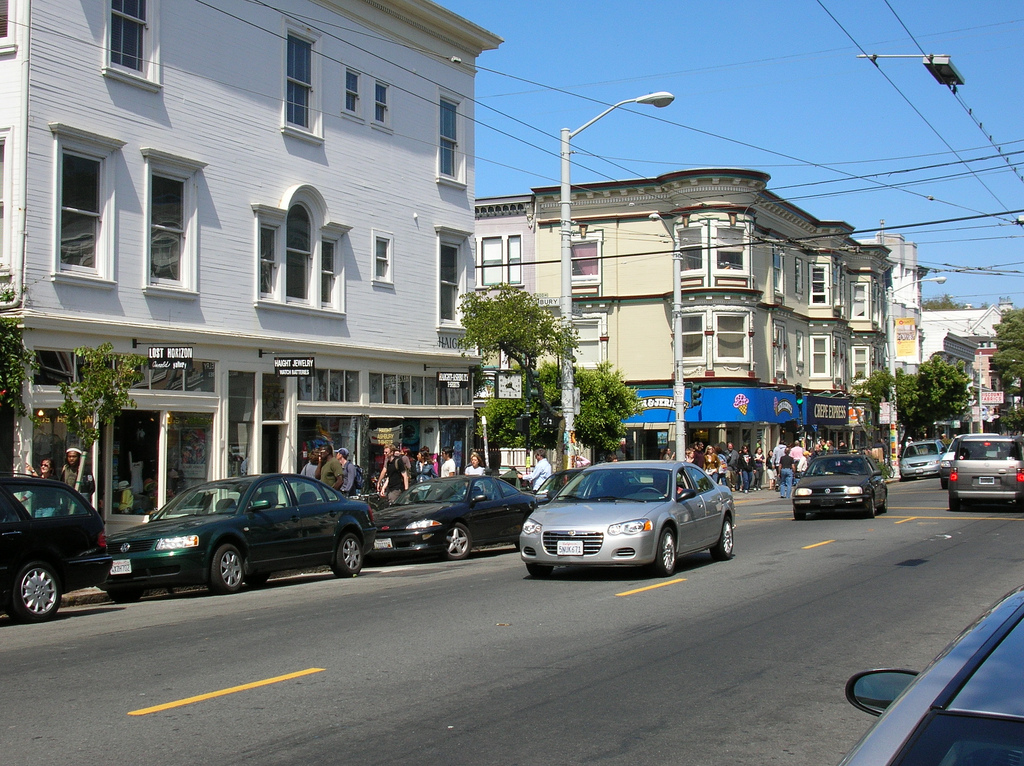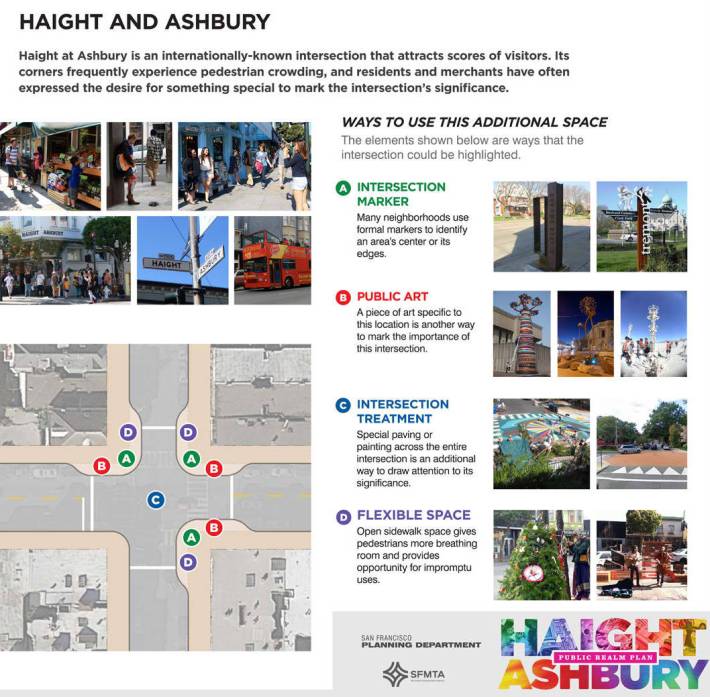
The Planning Department has an online survey about the Haight Street proposals, available until July 3.
City planners recently presented their latest plans for Haight Street, which include two overlapping projects from two agencies. The Haight-Ashbury Public Realm Plan is the Planning Department's effort to expand sidewalks and add aesthetic treatments along the Upper Haight (between Central and Stanyan Streets), while the SFMTA's Muni Transit Effectiveness Project will speed up Muni's 71-Haight/Noriega and 6-Parnassus buses along the entirety of Haight.

The SFMTA has proposed to remove all but one stop sign on Haight, replacing most of them with transit-priority traffic signals and others with traffic calming measures that encourage drivers to yield to pedestrians. That, along with transit bulb-outs and removing some bus stops, could cut travel times for Muni riders on Haight by about 3 minutes, said Muni TEP Planning Manager Sean Kennedy. A separate project, currently under construction, adds a contra-flow bus lane on Haight's easternmost block and is expected to shave off several more minutes.
Kennedy said that Muni plans to increase the 71's peak frequency, from every 10 minutes to 7 minutes. "If we can make some of these improvements to pedestrian safety and travel times, we think we can make that [increase] mean something -- instead of just getting a bunch of bus bunching," he said.
The transit bulb-outs, and other sidewalk extensions, are expected to provide some much-needed breathing room on Upper Haight -- particularly at Haight and Ashbury Streets, a world-famous tourist attraction.
"If you've walked down Haight Street, you know it's cluttered and crowded," said Alexis Smith, project manager for the Planning Department. "What's the pedestrian LOS here?," she said, referring to the Level of Service transportation planning metric used to measure congestion for drivers. "These intersections would be failing if we had a metric for that."
"Even local foot traffic is too much for Haight Street sidewalks, and any influx of tourists just overwhelms the street," said Katherine Roberts, a livable streets advocate who lives nearby in Cole Valley. "In my view, it is shameful that the city treats its residents and visitors like this."
Roberts pointed out that city planners could go much farther to create a more attractive Haight Street by banning private autos, while still allowing Muni buses, delivery trucks, and tour buses. "Then you'd have plenty of room for widened sidewalks, bike lanes, parklets, bike corrals, greenery, et cetera," she said.

"In my perfect world, we would restore the cable car line that ran all the way up Haight Street from downtown to Golden Gate Park, with the turnaround on Haight and Stanyan," Roberts said. "That would be an incredible draw, and provide a real boost of energy to the neighborhood. But all of these ideas would involve eliminating lots of on-street parking spaces. Sadly, as long as preserving parking spots in the name of 'balance' remains the MTA's top priority, the number and types of improvements we'll see on Haight Street will remain minimal."
While some continue to protest removing car parking for sidewalk extensions, Smith said that residents seem to strongly support wider sidewalks. Neighbors have shown strong interest in curating the amenities that might be placed on them, like greenery or public art that would define the neighborhood.
"Everyone knows this neighborhood for the '60s, but I think a lot of the residents feel like there's so much more to this neighborhood," said Smith. "There's a really thriving creative culture that's going on now, and they want to foster that. They want the street to reflect that."
Opponents have claimed that bulb-outs will increase congestion, even though they won't remove any traffic lanes. The transit bulb-outs will allow Muni buses to stop and load without pulling in and out of traffic, while corner bulb-outs will shorten pedestrian crossing distances and cause drivers to slow down while making turns.
Martin Matthews, who also lives in Cole Valley, said the open house meeting that he attended caused him to reflect upon the possibilities for change in the neighborhood. While he hadn't fully formed an opinion on the city's proposals, he said, "If we completely change this place, and make this gorgeous new sidewalk and all these different trees and everything, it could be beautiful. But will it be the same? Change isn't always good."
Smith noted that a marker, such as a sign post, could be placed to make the corner of Haight-Ashbury more apparent. "People get off the bus and see that the sign says Haight-Ashbury, so this is [that] intersection -- but there's nothing to call that out specifically," she said.






